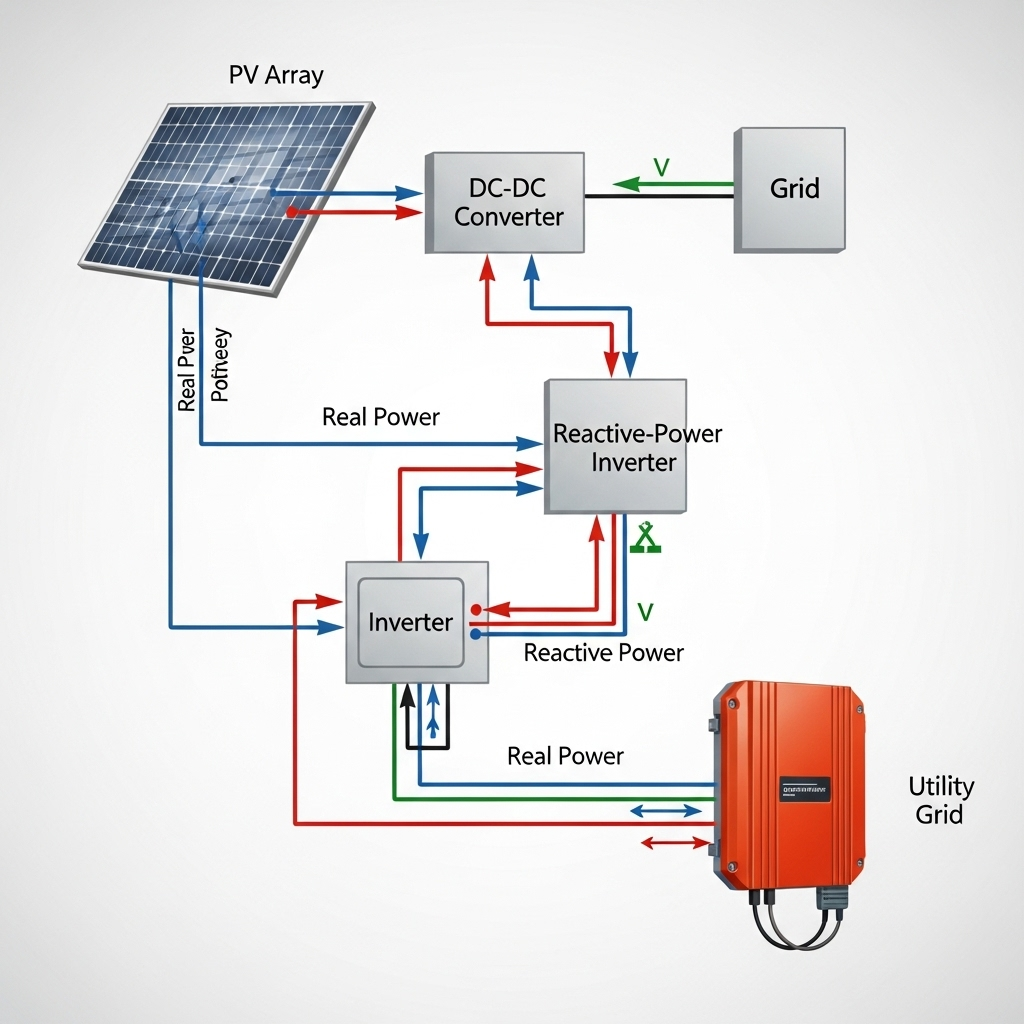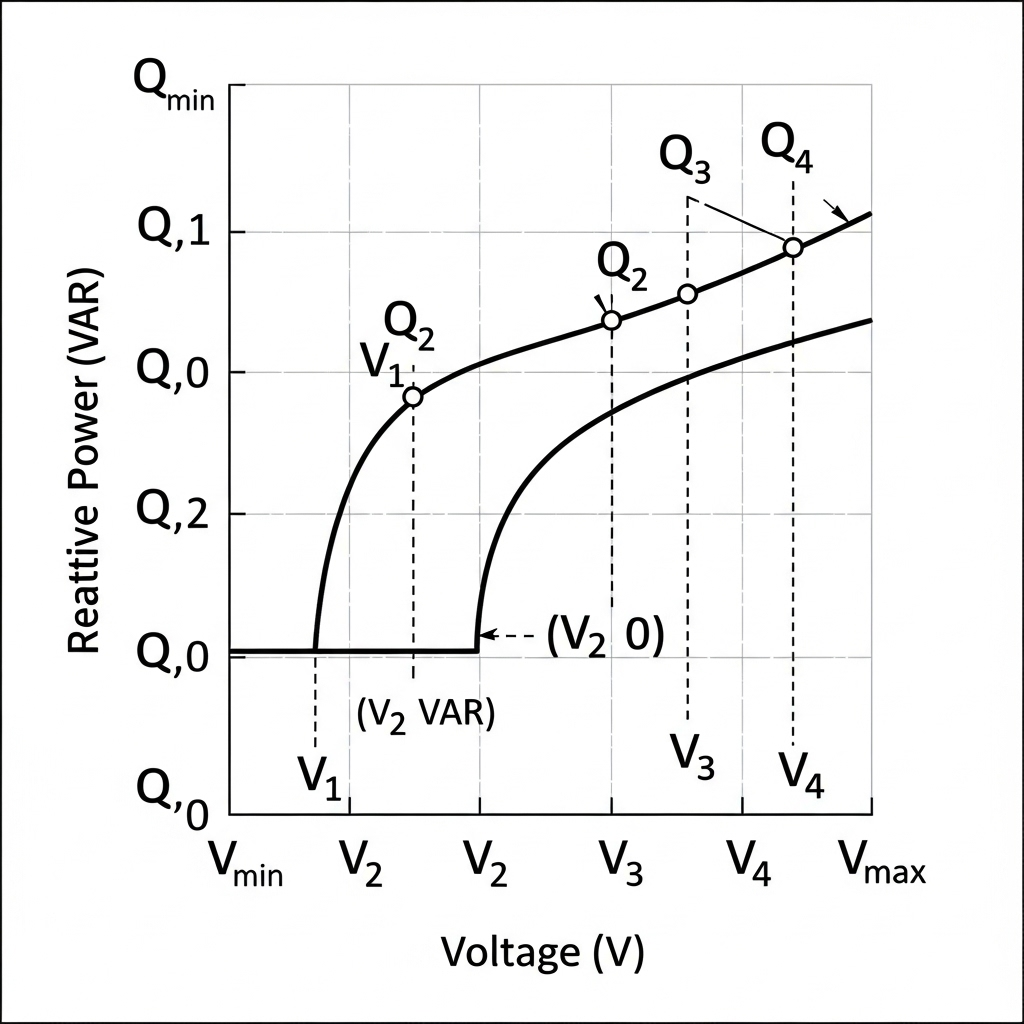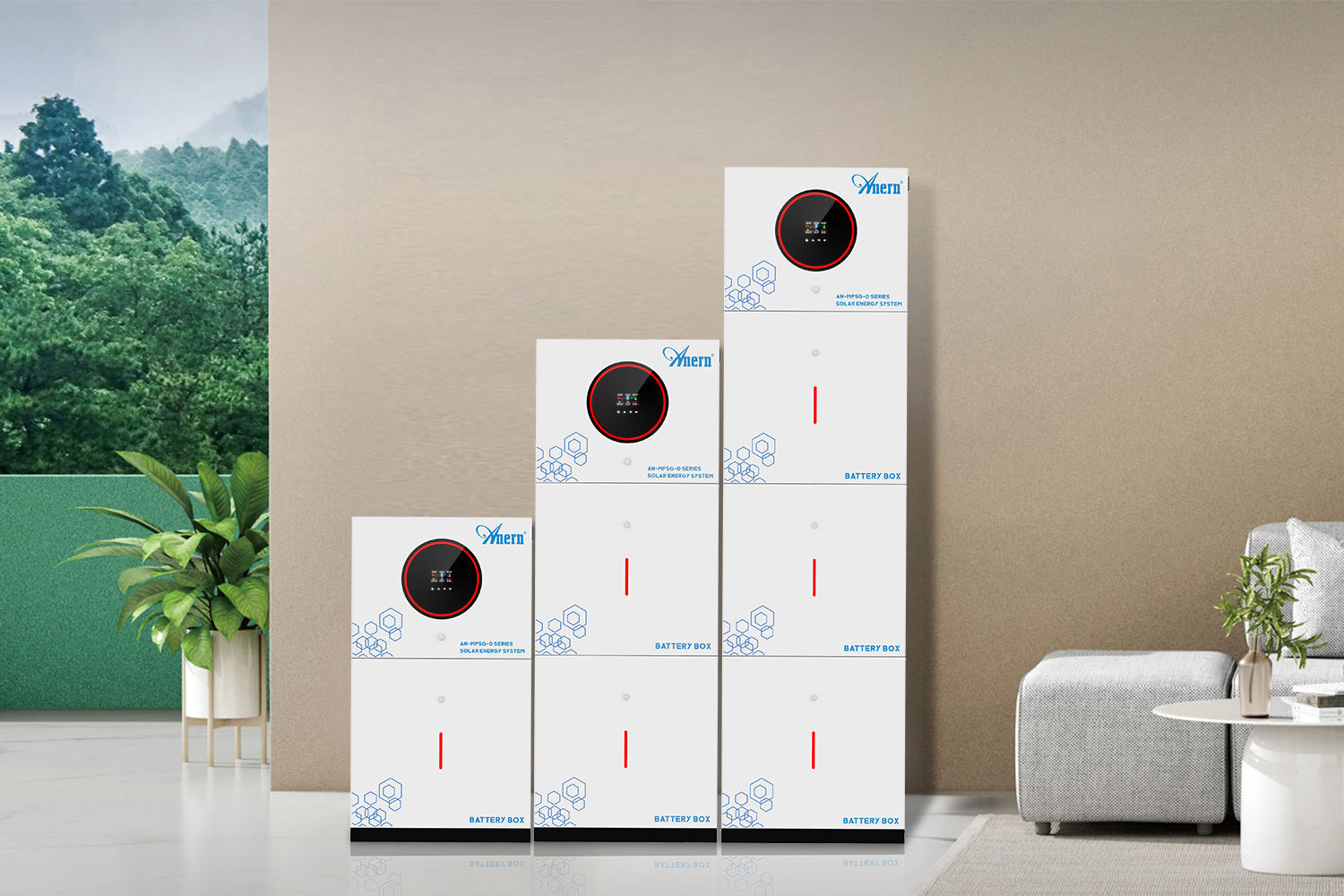Properly sizing an inverter is crucial for the performance and stability of any solar energy system. While engineers often focus on real power (kW), the role of reactive power is becoming increasingly vital for grid health. Reactive-power inverters are essential for maintaining voltage stability and meeting modern grid code requirements. Miscalculations in the sizing process can lead to system underperformance, grid compliance failures, and increased project costs. This overview identifies seven common mistakes engineers make, providing a clearer path to designing robust and efficient energy solutions.

Underestimating Evolving Grid Code Requirements
Grid codes are no longer simple sets of rules for interconnection. They are dynamic standards that dictate how renewable energy sources must behave to support the grid. Ignoring the nuances of these codes is a frequent oversight.
Ignoring Dynamic Voltage Support
A primary mistake is sizing an inverter only for steady-state operation. Modern grid codes mandate that inverters provide dynamic voltage support during grid disturbances. This capability, often called Low Voltage Ride Through (LVRT), requires the inverter to inject reactive current to prop up voltage during a fault. An inverter sized without this headroom will fail to meet compliance. As grid operators face new challenges with high renewable penetration, these requirements have become stricter. In fact, historical grid events have driven significant changes; for instance, as noted in the IEA's Technology Roadmap - Solar Photovoltaic Energy 2010, stability concerns in the German grid led to major revisions of interconnection standards for PV systems.
Overlooking Fault Current Contribution
Conventional power plants with synchronous generators can supply large fault currents, which protection devices rely on to detect and isolate faults. Inverter-based resources (IBRs) have a much lower fault current capacity, typically limited to 1.1-1.2 times their rated current. Sizing an inverter without considering its fault current contribution can disrupt the coordination of downstream protection systems. A report from IRENA, Grid Codes for Renewable Powered Systems, points out that reduced fault currents from high levels of IBRs present significant challenges for legacy protection schemes in distribution systems.
Focusing Solely on Real Power (kW)
A fundamental error is to size an inverter based only on the DC nameplate capacity of the solar array. This approach completely misses the reactive power component of the equation.
The kVA vs. kW Confusion
Inverters are rated in apparent power (kVA), not real power (kW). Apparent power is the vector sum of real power and reactive power (kVAR). When an inverter is required to produce reactive power, its capacity to produce real power is reduced. Sizing an inverter's kVA rating to simply match the PV array's kW output leaves no room for reactive power support, leading to power curtailment when the grid operator requests it.
Neglecting Power Factor Specifications
Utilities often require solar plants to operate within a specific power factor range, for example, 0.95 leading to 0.95 lagging. This means the system must be capable of both absorbing and injecting reactive power. An inverter sized for unity power factor (1.0) will be undersized to deliver the full rated real power while also meeting a 0.95 power factor requirement. The table below illustrates how the required apparent power increases as the power factor deviates from unity.
| Real Power (kW) | Power Factor | Required Apparent Power (kVA) | Reactive Power (kVAR) |
|---|---|---|---|
| 100 | 1.0 | 100.0 | 0 |
| 100 | 0.95 | 105.3 | 32.9 |
| 100 | 0.90 | 111.1 | 48.4 |
Ignoring Critical System-Level Interactions
An inverter does not operate in a vacuum. Its performance is tied to other system components and its role within the larger grid. Failing to consider these interactions leads to a poorly integrated system.
Mismatching with Energy Storage
In hybrid solar-plus-storage systems, the inverter must be sized to manage power flows from both the PV array and the battery. The inverter needs sufficient capacity to convert the DC power from the solar panels while also charging or discharging the battery, all while providing necessary reactive power. A comprehensive understanding of component interplay is key. For more details on optimizing these interactions, the ultimate reference on solar storage performance offers valuable analysis on how different elements of a storage system work together.
Overlooking Ancillary Service Capabilities
Modern inverters can provide a range of ancillary services, such as frequency regulation and voltage control, which can create additional revenue streams. Sizing an inverter too tightly for its primary function of energy conversion eliminates the headroom needed to participate in these services. As the share of variable renewable energy grows, the need for these services increases. A report by the IEA, Getting Wind and Solar onto the Grid, emphasizes that as systems reach high VRE shares, implementing measures for grid support becomes imperative to maintain security.
Misinterpreting Inverter Topologies and Limitations
Not all inverters are created equal. Different topologies and designs have distinct capabilities and limitations that must be factored into the sizing decision.
Confusing Grid-Following and Grid-Forming Inverters
Grid-following inverters, the most common type, require a stable grid voltage signal to operate. Grid-forming inverters can generate their own voltage and frequency signal, allowing them to operate independently and even 'black start' a section of the grid. Attempting to use a grid-following inverter in an application that requires grid-forming capabilities, like a resilient microgrid, is a critical design flaw. The advanced capabilities of grid-forming technology are significant; a U.S. Department of Energy success story highlights a project that used 24 grid-forming inverters to successfully restart a simulated grid after a complete outage.
Not Accounting for Thermal Derating
Inverter performance degrades in high ambient temperatures. Manufacturers provide derating curves that show how an inverter's maximum power output decreases as temperature rises. An engineer who fails to use the correct environmental data for the project site may select an inverter that is technically sufficient on paper but will underperform on the hottest days, precisely when reactive power support might be most needed.
A Better Approach to Inverter Sizing
Avoiding these common mistakes requires a shift in perspective. Sizing a reactive-power inverter is not just an electrical calculation; it is a system design task. It demands a thorough understanding of grid codes, system interactions, and the specific capabilities of the inverter technology being deployed. By considering apparent power (kVA), power factor requirements, dynamic grid support functions, and environmental conditions, engineers can design solar and energy storage systems that are not only compliant and efficient but also resilient and prepared for the demands of the future grid.
Frequently Asked Questions
What is reactive power and why is it important for inverters?
Reactive power is the component of electric power that maintains the voltage levels necessary for the grid to function. While it does not perform useful work (like powering a light bulb), it is essential for moving real power efficiently. Modern inverters are required to manage reactive power to help stabilize grid voltage, especially as more renewable energy sources are connected.
How does power factor affect inverter sizing?
Power factor is the ratio of real power (kW) to apparent power (kVA). A power factor of 1.0 means all power is real power. Any value less than 1.0 indicates the presence of reactive power. Because an inverter's total capacity is limited by its kVA rating, a requirement to operate at a lower power factor means it must be larger to deliver the same amount of real power.
Can an oversized inverter cause problems?
While undersizing is a more common and critical problem for reactive power, significant oversizing can have downsides. These may include higher upfront capital costs and potentially lower conversion efficiency when operating at very low power outputs relative to its capacity. However, for ensuring grid compliance and reactive power capability, a moderately oversized inverter is often a safer choice than an undersized one.





Leave a comment
All comments are moderated before being published.
This site is protected by hCaptcha and the hCaptcha Privacy Policy and Terms of Service apply.